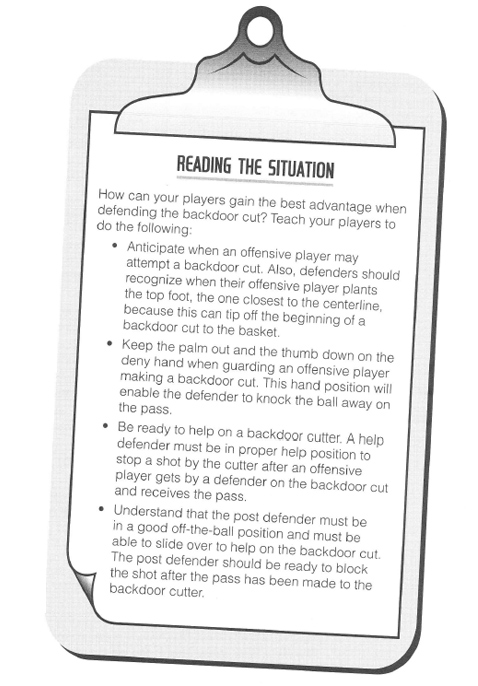|
Defending the Backdoor Cut by American Sport Education Program
A backdoor cut is used by an offensive player when the defender is overplaying the pass-that is, when the defender has a hand and foot in the passing lane to prevent the offensive player from receiving a pass. The offensive player sees this overplay by the defender and cuts hard to the basket, looking for a pass (typically a bounce pass) and an easy score. When an offensive player goes backdoor on a cut to get open for a pass, the defender may lose sight of the player. Therefore, defenders must learn how to stay with the offensive player on a backdoor cut and how to keep the ball in sight by opening to the ball as the offensive player goes back door. WATCH OUT!
ACQUIRING THE APPROPRIATE KNOWLEDGE Rules
Strengths and Weaknesses of Opponents
Decision-Making Guidelines
|
|
|







